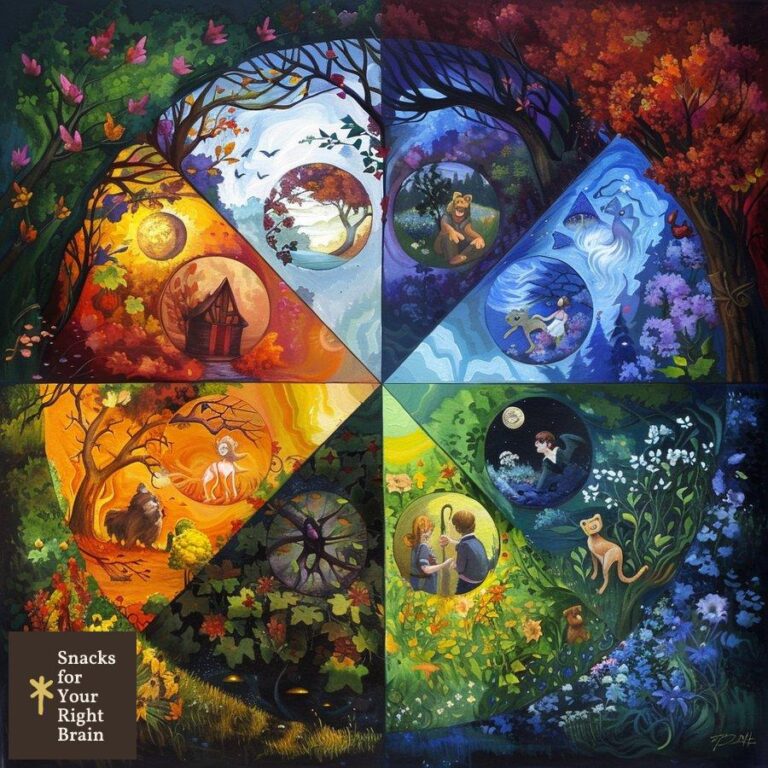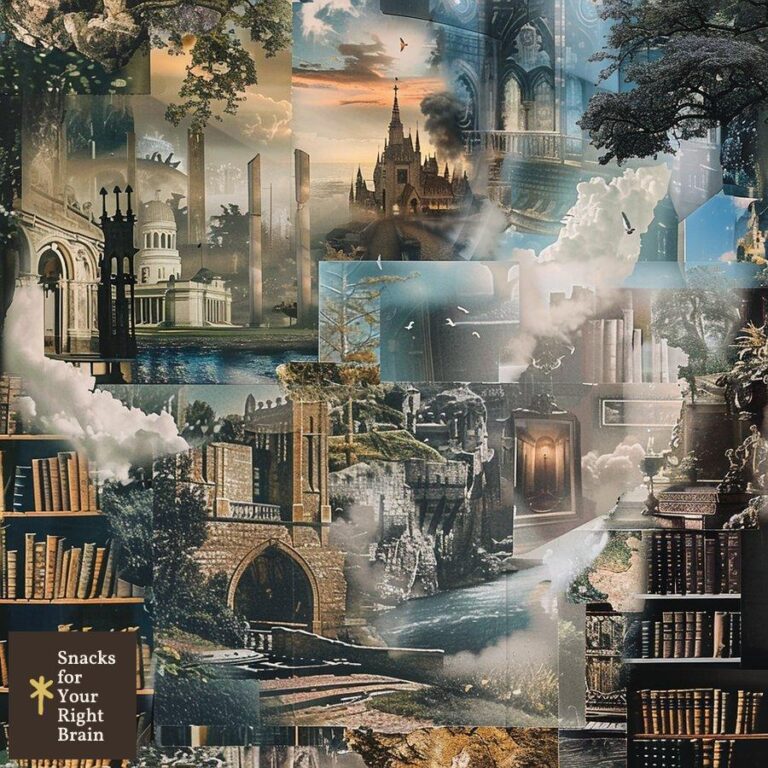What Role Does Setting Play in a Short Story
How does setting establish the foundation of a short story?
Setting serves as the backdrop for a short story, creating a context in which characters interact and events unfold. It encompasses various elements, including time, place, and environment, which collectively establish the narrative’s foundation.
-
Time: The temporal aspect of setting can influence the story’s mood and the characters’ actions. For instance, a story set during a war may evoke feelings of tension and urgency, while one set in a tranquil village may evoke peace and nostalgia.
-
Place: The geographical location shapes the characters’ experiences and influences their behaviors. Urban settings may present challenges and opportunities unique to city life, while rural settings may highlight themes of isolation or community.
-
Environment: The physical environment, including weather and landscape, can mirror the emotional states of characters or foreshadow events. A stormy night may signify impending conflict, while a sunny day may suggest hope or resolution.
The interplay between these elements creates a rich tapestry that supports the narrative. A well-defined setting not only grounds the story but also enriches the reader’s understanding of the characters and their motivations.
What are the elements of setting in short fiction?
Understanding the elements of setting is essential for writers seeking to create immersive short stories. The following components contribute to a comprehensive setting:

-
Geographical Location: Refers to the specific place where the story occurs, such as a city, country, or fictional realm. This element shapes the cultural and social dynamics of the narrative.
-
Historical Context: The time period in which the story unfolds can significantly influence characters’ behaviors and societal norms. Writers must consider the historical backdrop to ensure authenticity and relevance.
-
Physical Environment: This includes the natural surroundings, architecture, and climate. The physical environment can affect the plot and character interactions, providing a sensory experience for readers.
-
Cultural Influences: The customs, beliefs, and values of the characters’ society can shape their actions and decisions. Cultural context adds depth to character motivations and conflicts.
-
Social Environment: The relationships and social structures within the setting impact the characters’ dynamics. Understanding the social environment helps writers depict realistic interactions and conflicts.
A comprehensive setting incorporates these elements, allowing readers to fully engage with the narrative and its characters.
How does setting influence plot development?
Setting plays a pivotal role in shaping the plot of a short story. It influences the events that unfold and the decisions made by characters. The following aspects illustrate this relationship:
-
Conflict Creation: The setting can introduce conflicts that drive the plot forward. For example, a story set in a dystopian future may present societal struggles that characters must navigate, creating tension and urgency.
-
Character Motivation: The environment often influences characters’ goals and desires. A character’s aspiration to escape a small town may lead to a quest for adventure, propelling the plot.
-
Pacing and Timing: The setting can dictate the story’s pacing. A fast-paced urban environment may lead to quick, action-driven scenes, while a slow, rural setting may allow for introspection and character development.
-
Foreshadowing: Elements within the setting can foreshadow future events. A seemingly innocuous detail, such as an abandoned house, may hint at hidden dangers or secrets that will emerge later in the narrative.
-
Resolution: The setting often plays a role in the story’s conclusion. The environment can reflect the characters’ growth or signify a return to normalcy after conflict resolution.
By intertwining setting with plot development, writers create a cohesive narrative that resonates with readers.
In what ways does setting contribute to character development?

Setting significantly impacts character development, shaping their identities, motivations, and relationships. The following points highlight this influence:
-
Cultural Background: Characters are often products of their environments. A character raised in a wealthy urban neighborhood may exhibit different values and behaviors than one from a struggling rural community.
-
Social Interactions: The social environment dictates how characters interact with one another. A close-knit community may foster loyalty and support, while a competitive urban setting may breed rivalry and distrust.
-
Personal Growth: The challenges posed by the setting can catalyze character growth. A character who faces adversity in a harsh environment may develop resilience and strength.
-
Internal Conflicts: The setting can create internal conflicts within characters. For instance, a character torn between familial obligations and personal aspirations may struggle with their identity in a traditional setting.
-
Symbolic Relationships: Characters may have symbolic relationships with their environments. A character’s connection to nature may reflect their emotional state, while urban settings may symbolize chaos or opportunity.
Through these dynamics, setting becomes a vital tool for revealing character depth and complexity.
How can setting be used to establish tone and atmosphere?
The tone and atmosphere of a short story are heavily influenced by its setting. Writers can manipulate various elements to evoke specific feelings and moods in readers:
-
Descriptive Language: Vivid descriptions of the setting can create an immediate emotional response. For example, dark, stormy skies may evoke fear, while bright, sunny landscapes may suggest happiness.
-
Sensory Details: Engaging multiple senses enhances the atmosphere. Describing sounds, smells, and textures can immerse readers in the setting, making them feel present in the narrative.
-
Symbolism: Elements of the setting can carry symbolic weight, contributing to the overall tone. A decaying building may symbolize loss or decay, while a vibrant garden may represent hope and renewal.
-
Weather and Time of Day: The choice of weather and time can significantly affect the story’s mood. Rain may create a somber tone, while a sunrise can symbolize new beginnings.
-
Character Reactions: Characters’ responses to their environment can also establish tone. A character who feels at home in a bustling city may convey excitement, while another who feels trapped may evoke tension.
Through these techniques, writers can craft a compelling tone and atmosphere that resonates with readers.
What role does setting play in symbolism and thematic significance?

Setting often serves as a vehicle for symbolism and thematic exploration in short stories. The relationship between setting and themes can be articulated in the following ways:
-
Symbolic Landscapes: The physical landscape can symbolize broader themes. For instance, a barren desert may represent isolation or desolation, while a lush forest may symbolize growth and renewal.
-
Cultural Context: The cultural setting can reflect societal themes such as class struggle, identity, or belonging. A story set in a divided community may explore themes of prejudice and acceptance.
-
Temporal Significance: The historical context can highlight themes related to change and progress. A story set during a significant historical event may explore themes of resilience and adaptation.
-
Character Relationships: The setting can symbolize the relationships between characters. A shared space may signify connection, while a divided environment may highlight conflict.
-
Moral Lessons: The consequences of characters’ actions within their setting can convey moral lessons. A character who exploits their environment may face dire repercussions, reinforcing themes of respect and responsibility.
By utilizing setting as a symbolic tool, writers can deepen the thematic richness of their narratives.
How does setting enhance narrative style in short stories?
The narrative style of a short story is often enhanced by the effective use of setting. Writers can employ various techniques to create a distinctive voice and style:
-
Imagery: Rich imagery related to the setting can evoke emotions and create vivid mental pictures. This enhances the reader’s experience and engagement with the narrative.
-
Point of View: The choice of perspective can influence how the setting is perceived. A first-person narrator may provide intimate details about their environment, while a third-person omniscient perspective may offer a broader view.
-
Pacing: The setting can dictate the pacing of the narrative. A fast-paced urban setting may lead to quick, action-oriented scenes, while a tranquil rural setting may allow for reflective moments.
-
Dialogue: Characters’ dialogue can reflect their environment. Regional dialects or cultural references can add authenticity and depth to the narrative style.
-
Structure: The organization of the narrative can be influenced by setting. A non-linear structure may mirror the complexities of a character’s relationship with their environment.
Through these stylistic choices, writers can create a unique narrative voice that resonates with readers.
What techniques can writers use to effectively describe setting?
Writers can employ various techniques to effectively describe setting, enhancing the reader’s experience and immersion in the narrative:
-
Show, Don’t Tell: Instead of simply stating facts about the setting, writers should illustrate it through character interactions and sensory details. This technique allows readers to experience the setting firsthand.
-
Use of Metaphors and Similes: Figurative language can create vivid imagery. Comparing elements of the setting to familiar concepts can help readers visualize and connect with the environment.
-
Incorporate Character Perspectives: Describing the setting through a character’s eyes adds depth and personalizes the experience. This technique allows readers to understand how the environment affects characters emotionally.
-
Layering Details: Gradually revealing details about the setting can build intrigue. Writers can start with broad descriptions and then zoom in on specific elements to create a more immersive experience.
-
Symbolic Elements: Including symbolic elements within the setting can enhance thematic depth. Writers should consider how specific details may carry meaning beyond their literal interpretation.
By employing these techniques, writers can create a vivid and engaging setting that captivates readers.
How does setting contribute to world-building in short fiction?
World-building is a critical aspect of short fiction, and setting plays a vital role in creating a believable and immersive universe. The following elements illustrate how setting contributes to effective world-building:

-
Cultural Details: The setting should reflect the cultural norms, beliefs, and practices of the characters. This adds authenticity and depth to the narrative, allowing readers to connect with the world.
-
Historical Context: Incorporating historical elements into the setting can enrich the world-building. Writers should consider how past events shape the present environment and influence characters.
-
Geographical Diversity: A well-constructed world includes diverse geographical settings. Different locations can introduce unique challenges and opportunities for characters, enhancing the narrative.
-
Social Structures: The social environment should reflect the power dynamics and relationships within the world. Writers must consider how social hierarchies influence character interactions and conflicts.
-
Environmental Considerations: The physical environment, including climate and resources, can affect the characters’ lives and decisions. Writers should think about how these factors shape the world and its inhabitants.
Through careful attention to these elements, writers can create a rich and immersive world that captivates readers.
What are some examples of masterful setting use in famous short stories?
Several renowned short stories exemplify the masterful use of setting to enhance narrative depth and engagement. Notable examples include:
-
“The Lottery” by Shirley Jackson: The seemingly idyllic small-town setting contrasts sharply with the story’s dark themes. The setting establishes a sense of normalcy that heightens the shock of the plot twist.
-
“A Good Man is Hard to Find” by Flannery O’Connor: The Southern setting plays a crucial role in shaping character interactions and themes of morality. The landscape reflects the characters’ internal struggles and societal norms.
-
“The Yellow Wallpaper” by Charlotte Perkins Gilman: The oppressive domestic setting serves as a symbol of the protagonist’s mental state. The detailed descriptions of the wallpaper and room create a claustrophobic atmosphere that mirrors her descent into madness.
-
“Harrison Bergeron” by Kurt Vonnegut: The dystopian setting highlights themes of conformity and individuality. The oppressive environment underscores the story’s critique of enforced equality.
-
“The Tell-Tale Heart” by Edgar Allan Poe: The dark and eerie setting amplifies the story’s themes of guilt and madness. The meticulous descriptions of the old man’s house create a sense of dread and tension.
These examples illustrate how effective setting can enhance storytelling, deepen themes, and engage readers on multiple levels.






